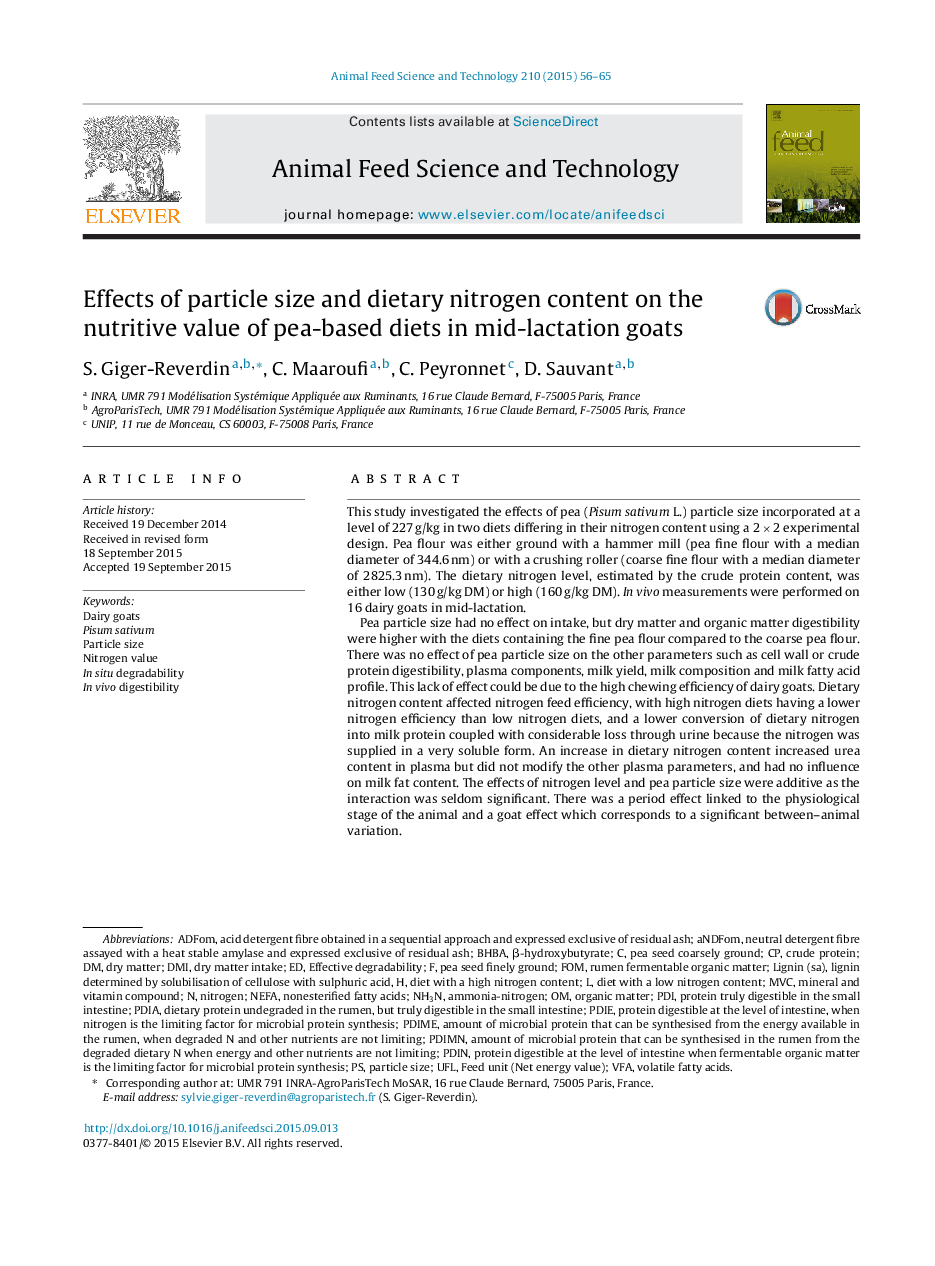| Article ID | Journal | Published Year | Pages | File Type |
|---|---|---|---|---|
| 2419315 | Animal Feed Science and Technology | 2015 | 10 Pages |
•Pea seeds can be a relevant source of protein for ruminants.•The nitrogen value of pea is underestimated by the in situ method.•Particle size of pea seeds does not influence performances of dairy goats.•An increase of nitrogen content with a soluble fraction increases urinary nitrogen loss.
This study investigated the effects of pea (Pisum sativum L.) particle size incorporated at a level of 227 g/kg in two diets differing in their nitrogen content using a 2 × 2 experimental design. Pea flour was either ground with a hammer mill (pea fine flour with a median diameter of 344.6 nm) or with a crushing roller (coarse fine flour with a median diameter of 2825.3 nm). The dietary nitrogen level, estimated by the crude protein content, was either low (130 g/kg DM) or high (160 g/kg DM). In vivo measurements were performed on 16 dairy goats in mid-lactation.Pea particle size had no effect on intake, but dry matter and organic matter digestibility were higher with the diets containing the fine pea flour compared to the coarse pea flour. There was no effect of pea particle size on the other parameters such as cell wall or crude protein digestibility, plasma components, milk yield, milk composition and milk fatty acid profile. This lack of effect could be due to the high chewing efficiency of dairy goats. Dietary nitrogen content affected nitrogen feed efficiency, with high nitrogen diets having a lower nitrogen efficiency than low nitrogen diets, and a lower conversion of dietary nitrogen into milk protein coupled with considerable loss through urine because the nitrogen was supplied in a very soluble form. An increase in dietary nitrogen content increased urea content in plasma but did not modify the other plasma parameters, and had no influence on milk fat content. The effects of nitrogen level and pea particle size were additive as the interaction was seldom significant. There was a period effect linked to the physiological stage of the animal and a goat effect which corresponds to a significant between–animal variation.The results confirmed that the in situ method underestimates the true values of protein digestible in the small intestine (PDI) for pea, which needs to be addressed in the revision of feed value tables. This is of practical importance as peas grow easily in temperate climates, such as in the European Union, and can reduce dependency on imported protein-rich feeds for ruminant feeding.
